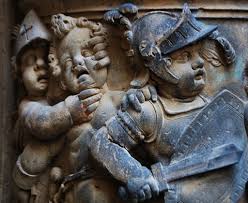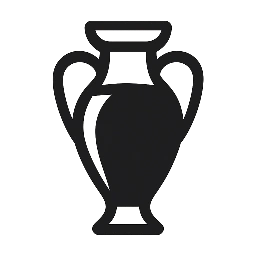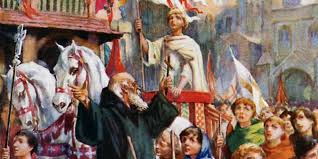Vaša košarica je trenutno prazna!
Introduction: A Crusade Led by Children?
In the year 1212, one of the most puzzling and heartbreaking stories of the medieval period unfolded—the Children’s Crusade. According to many historical accounts, thousands of European children set off with the belief that their innocence and faith could peacefully reclaim the Holy Land. These crusaders, many no older than 12 or 13, were said to be inspired by divine visions and a burning desire to serve God. But unlike the armored knights of earlier crusades, these children carried no weapons, only crosses, songs, and hope. Their journey was tragic from the start, marked by starvation, deception, and betrayal. Some never made it past the Alps; others allegedly disappeared without a trace. The biggest mystery remains: Were they sold into slavery, or is the entire story a myth?
The Origins of the Children’s Crusade

There are two major figures associated with the movement—Stephen of Cloyes from France and Nicholas of Cologne from Germany. Both claimed to have received divine instruction to lead a holy army of children to the Holy Land. Stephen reportedly gathered over 30,000 young followers, preaching in towns across France. Nicholas is said to have led another massive group southward across the Alps. Unlike other crusades sanctioned by the Pope, this crusade was not officially recognized by the Church. Medieval chroniclers tell of thousands of children marching across Europe, hoping that the Mediterranean Sea would part for them as it did for Moses. Tragically, that miracle never came.
The Fate of the French Children: Betrayed at the Sea
According to chroniclers, when Stephen and his followers reached Marseille, two merchants offered them free passage to the Holy Land aboard their ships. But instead of reaching Jerusalem, two of the seven ships were lost in a storm, and the remaining children were allegedly sold into slavery in North Africa. The merchants—Hugh the Iron and William the Pig—were later accused of human trafficking, but the historical record is unclear about whether they were ever punished. Some reports suggest a few children made it back to Europe years later, though there’s no solid evidence. This account has fueled the idea that the crusade ended in mass abduction and enslavement. While tragic, this version aligns with the high level of exploitation common in medieval times.
Was the Children’s Crusade a Myth?
Modern historians debate whether the Children’s Crusade happened exactly as told. Some argue that the term “children” (Latin: pueri) may have referred to landless peasants, impoverished youth, or even wandering students. Others believe the scale of the movement has been exaggerated by medieval writers seeking to teach moral lessons. Still, contemporary documents from 13th-century monastic sources do reference unusual youth movements around 1212. Whether these were religious pilgrimages, failed uprisings, or genuine crusades remains debated. What is clear is that thousands of people—many young—suffered and vanished during these undocumented journeys.
Legacy of the Children’s Crusade
Regardless of the historical details, the story of the Children’s Crusade endures as a symbol of idealism, exploitation, and tragedy. It reminds us of the dangers of blind faith, especially when combined with manipulation by those in power. Today, the event is referenced in books, documentaries, and even plays as a chilling allegory of innocence lost. Some view it as an early case of human trafficking disguised as religious fervor. Others see it as a misunderstood social movement born out of desperation. Either way, the legend of the children who disappeared continues to haunt medieval history.
Explore more historical war machines on our Legends and Myths site.

